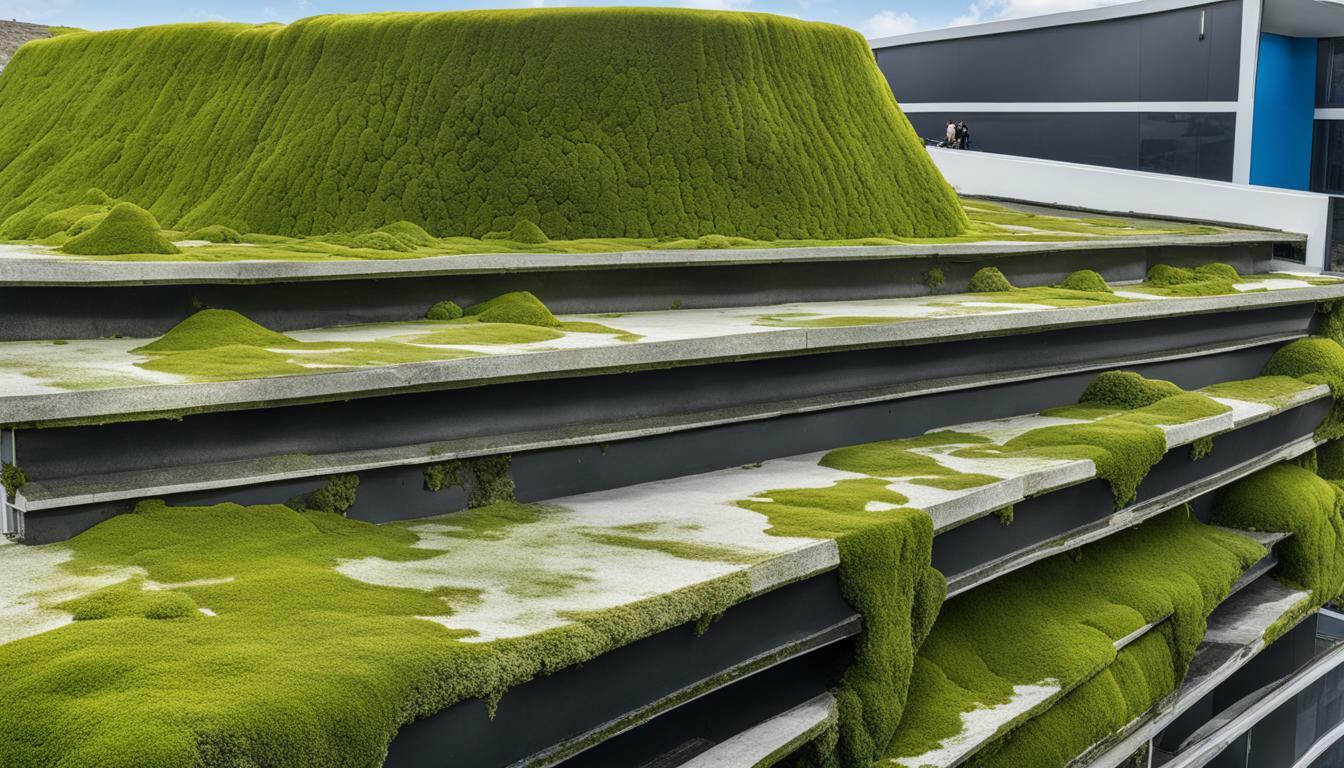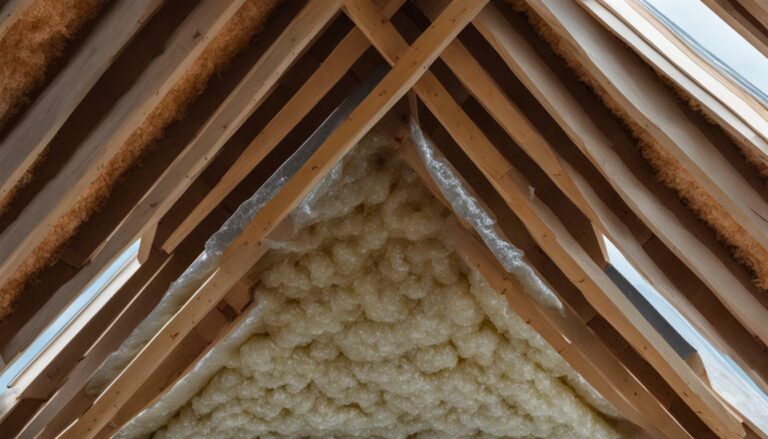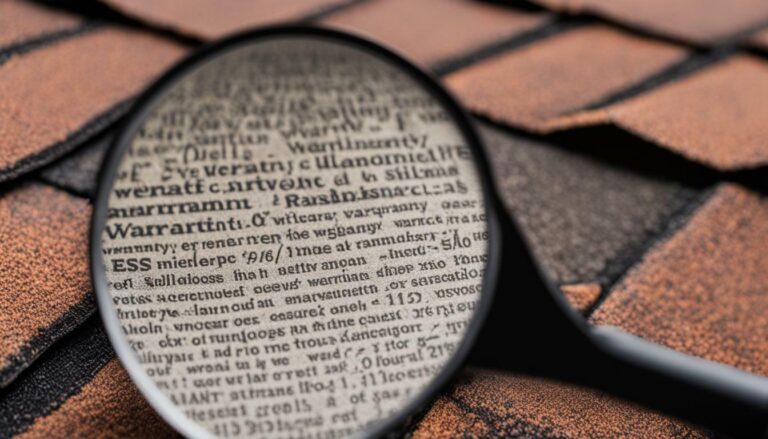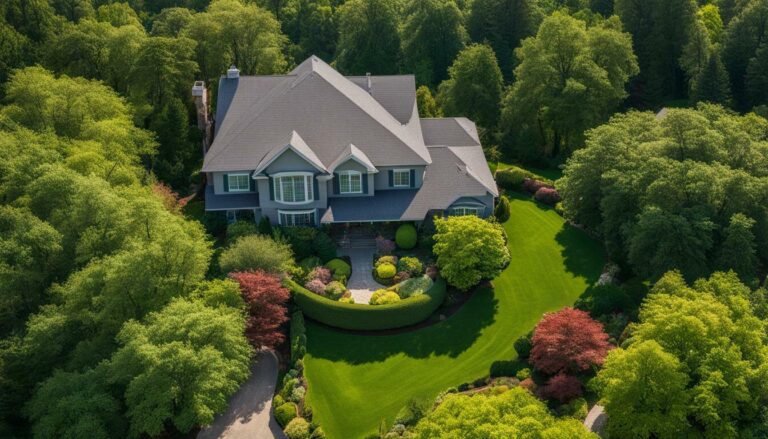Expert Guide to Roof Algae and Mold Prevention Techniques
Roof algae and mold can be a recurring problem for homeowners, especially in warm and humid climates. These unsightly growths not only impact the aesthetics of your home but also affect the effectiveness of your roof. Algae, often mistaken for mold or mildew, appears as black discoloration and streaks on roofs. While it is not damaging to asphalt shingles, it can reduce the reflectivity of “cool” roofs. On the other hand, moss is a non-vascular plant that thrives in moist environments. If left untreated, it can cause shingles to lift or curl, potentially leading to water damage and leaks.
To prevent and remove algae and moss, there are practical techniques and preventive measures you can take. One effective method is to use a 50:50 mix of liquid chlorine bleach and water to kill the growths, followed by careful rinsing. Regular maintenance, such as trimming tree branches to increase sunlight exposure, clearing debris from the roof, directing airflow away from the shingles, and keeping gutters clean, can also help prevent their growth. Additionally, adding zinc or copper strips under the shingles can inhibit algae growth and further protect your roof.
Key Takeaways:
- Roof algae and mold can be a recurring problem in warm and humid climates.
- Algae appears as black discoloration and streaks on roofs, while moss is a non-vascular plant that thrives in moist environments.
- Algae does not damage asphalt shingles but can affect the reflectivity of “cool” roofs.
- Moss can cause shingles to lift or curl, potentially leading to water damage and leaks if left untreated.
- Preventive measures include using a 50:50 mix of liquid chlorine bleach and water, maintaining proper roof hygiene, directing airflow away from shingles, and adding zinc or copper strips under the shingles.
Understanding Roof Algae and Mold
Roof algae, often mistaken for mold or mildew, appears as black discoloration and streaks on roofs. This can be a recurring problem for homeowners, especially in warm and humid climates. While algae is not damaging to asphalt shingles, it can certainly impact the aesthetics and effectiveness of reflective or “cool” roofs.
Moss, on the other hand, is a non-vascular plant that thrives in moist environments. It can cause shingles to lift or curl, creating potential areas for water damage and leaks if left untreated. It is important to understand the difference between algae and moss in order to effectively prevent and address their growth on roofs.
“Roof algae, often mistaken for mold or mildew, appears as black discoloration and streaks on roofs.”
To prevent and remove roof algae and moss, there are a few key techniques to consider. A 50:50 mix of liquid chlorine bleach and water can be used to clean the affected areas, followed by careful rinsing. However, it is important to note that bleach can potentially harm other plants and surfaces, so caution must be exercised.
Implementing preventive measures is essential in avoiding the growth of algae and moss. Trimming tree branches to increase sunlight exposure on the roof, clearing debris regularly to minimize moisture retention, directing airflow away from the shingles, and keeping gutters clean to ensure proper drainage are all effective ways to prevent their growth. Adding zinc or copper strips under the shingles is also highly recommended, as these metals work to inhibit algae growth.
It is worth noting that pressure washing should be avoided when it comes to asphalt shingle roofs. This aggressive cleaning method may cause granule loss and premature roof failure, ultimately leading to costly repairs or replacements. Instead, opt for safer alternatives like low-pressure washing or manual scrubbing to remove any dirt or debris.

| Key Points | Benefits |
|---|---|
| Regular cleaning and maintenance | Prevents the growth of algae and moss |
| Trimming tree branches and clearing debris | Increases sunlight exposure and minimizes moisture retention |
| Adding zinc or copper strips under shingles | Inhibits the growth of algae |
| Avoiding pressure washing | Prevents granule loss and premature roof failure |
Conclusion
Understanding roof algae and mold is the first step in effective prevention and maintenance. By implementing preventive measures, using appropriate cleaning techniques, and considering professional roof algae and moss removal services when necessary, homeowners can ensure the longevity and functionality of their roofs.
The Impact of Moss on Roofs
Moss, a non-vascular plant, thrives in moist environments and can cause shingles to lift or curl, potentially resulting in water damage and leaks. It is important for homeowners to understand the impact of moss on roofs and take preventive measures to avoid costly repairs. When moss takes hold on a roof, its root-like structures penetrate the shingles, causing them to loosen or crack. As a result, moisture can seep underneath, leading to rot and further damage to the underlying structure.
In addition to the structural damage, moss can also impact the overall appearance of a roof. The green, fuzzy growth is unsightly and can make a home appear neglected or in disrepair. Furthermore, moss can impede the natural flow of rainwater off the roof, leading to pooling and potential water damage. This can include the formation of ice dams in colder climates, which can be particularly damaging to roofs.
To prevent moss growth and its associated problems, regular maintenance is essential. This includes trimming tree branches to increase sunlight exposure, as moss thrives in shaded areas. Clearing debris, such as leaves and twigs, from the roof is also important, as these can create a damp environment conducive to moss growth. It is also recommended to direct airflow away from the shingles by keeping vegetation, such as overhanging branches, at a safe distance from the roof. Additionally, keeping gutters clean and free of debris will ensure proper water drainage and reduce the chance of moss taking hold.
| Preventive Measures to Avoid Moss Growth |
|---|
| Trim tree branches for increased sunlight exposure |
| Clear debris from the roof |
| Direct airflow away from the shingles |
| Maintain clean gutters for proper water drainage |
By taking these preventive measures, homeowners can protect their roofs from moss growth and the potential damage it can cause. However, if moss is already present, it is important to address it promptly. Seeking professional roof algae and moss removal services can ensure safe and effective removal without causing further damage to the roof. These experts have the knowledge and equipment to eliminate moss and restore the roof’s integrity, helping homeowners maintain a beautiful and well-maintained home.
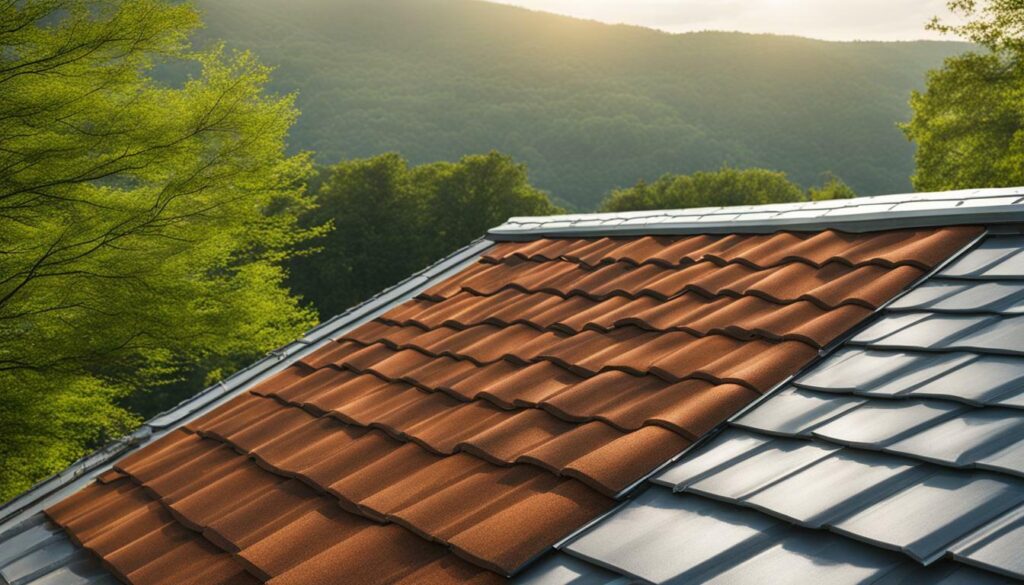
Implementing preventive measures is crucial to avoid the growth of algae and moss on your roof. By taking proactive steps, you can maintain the integrity and appearance of your roof for years to come. Here are some effective ways to prevent the growth of algae and moss:
- Trim tree branches: Overhanging tree branches can block sunlight from reaching your roof, creating a moist environment that is ideal for the growth of algae and moss. Regularly trimming tree branches can help increase sunlight exposure and discourage their development.
- Clear debris: Debris such as leaves, twigs, and pine needles can accumulate on your roof and create a breeding ground for algae and moss. It is essential to clear the debris regularly to prevent them from taking hold and causing damage.
- Direct airflow: Proper ventilation is crucial for maintaining a healthy roof. By directing airflow away from the shingles, you can reduce moisture buildup and inhibit the growth of algae and moss. Consider installing ridge vents or attic fans to promote air circulation.
- Keep gutters clean: Clogged gutters can lead to water backup, which can seep into the roof and create the perfect environment for algae and moss to thrive. Regularly clean your gutters and ensure they are free from debris to prevent water damage and roof problems.
Additional Preventive Measures
To further prevent the growth of algae and moss on your roof, consider implementing the following practices:
- Install zinc or copper strips: These metal strips can be placed under the shingles to inhibit the growth of algae. Zinc and copper release ions that are toxic to algae, helping to prevent their development.
- Avoid pressure washing: It may be tempting to use a pressure washer to clean your roof, but this can cause granule loss and premature roof failure, especially for asphalt shingles. Instead, opt for gentle cleaning methods such as using a soft-bristle brush or low-pressure spraying.
- Consider professional services: If you’re unsure about how to effectively prevent or remove algae and moss from your roof, it’s best to seek professional help. Roof algae and moss removal services have the expertise and specialized equipment to safely and effectively handle these issues.
By following these preventive measures and taking proactive steps, you can effectively prevent the growth of algae and moss on your roof. Regular maintenance and care will not only protect the integrity of your roof but also enhance its overall longevity and appearance.
| Preventive Measures | Benefits |
|---|---|
| Trimming tree branches | Increases sunlight exposure, discourages algae and moss growth |
| Clearing debris | Prevents algae and moss buildup, reduces risk of damage |
| Directing airflow | Reduces moisture buildup, inhibits growth of algae and moss |
| Keeping gutters clean | Prevents water backup and potential roof problems |
Remember, prevention is key when it comes to roof algae and moss. By implementing these preventive measures and seeking professional assistance when needed, you can ensure a clean, healthy, and long-lasting roof for your home.
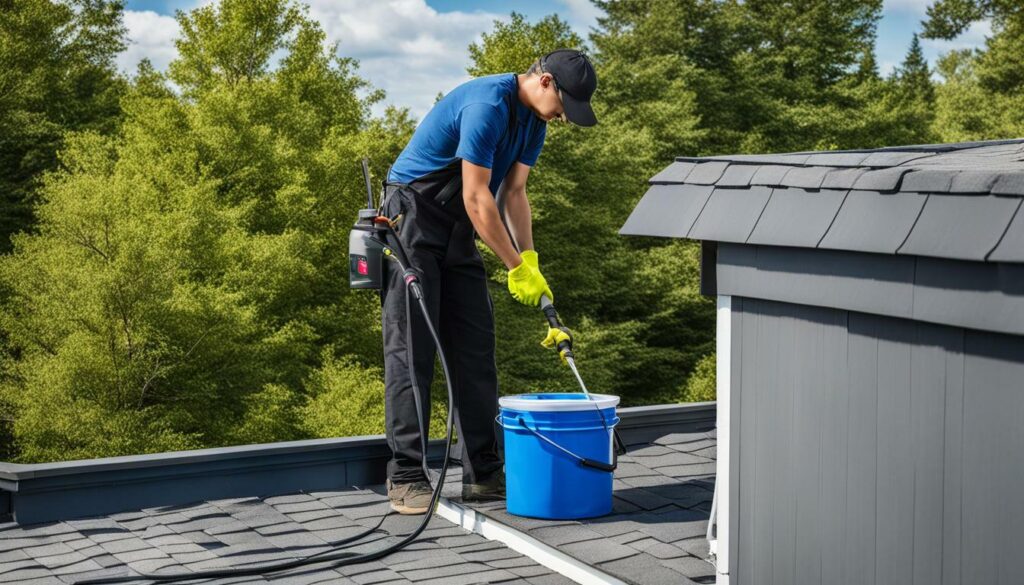
Regular cleaning and maintenance of your roof can help prevent the growth of algae and mold. These unsightly and potentially damaging organisms thrive in warm and humid climates, making it important to take proactive measures to protect your roof.
One effective DIY method for cleaning and preventing the growth of algae and mold is using a 50:50 mix of liquid chlorine bleach and water. Apply the solution to affected areas and let it sit for about 15 minutes before rinsing thoroughly with water. This will help to kill any existing algae or mold and prevent future growth.
When cleaning your roof, it’s essential to take safety precautions. Ensure you have proper footing on a stable ladder and wear protective gear such as gloves and goggles. It’s also important to be mindful of the surrounding landscaping and use tarps or plastic sheeting to protect plants and shrubs from the cleaning solution.
Best Practices for Roof Maintenance
In addition to regular cleaning, there are several best practices you can follow to maintain your roof and prevent the growth of algae and mold:
- Trim tree branches that hang over your roof to increase sunlight exposure and prevent excess moisture.
- Clear debris, such as leaves and branches, from your roof regularly to prevent moisture retention.
- Ensure proper ventilation in your attic to reduce humidity and maintain a dry environment.
- Keep gutters clean and free from debris to allow for proper water drainage.
- Consider installing zinc or copper strips under the shingles. These metal strips release ions that inhibit the growth of algae and mold.
By following these DIY cleaning tips and best practices for roof maintenance, you can effectively prevent the growth of algae and mold and prolong the lifespan of your roof.
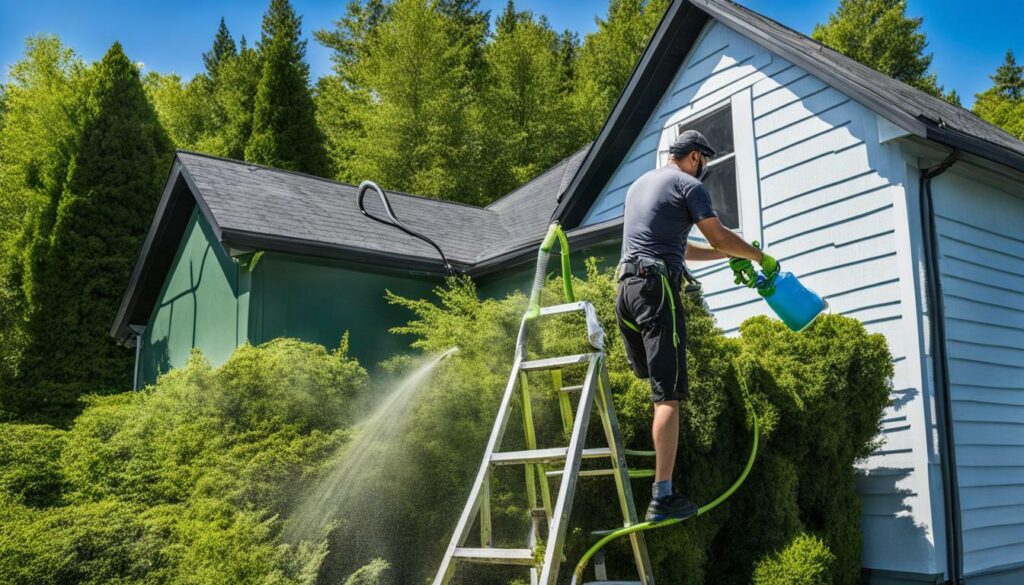
Using Zinc or Copper Strips for Prevention
An effective method to prevent algae growth on roofs is by installing zinc or copper strips under the shingles. These metal strips work by releasing small amounts of zinc or copper ions when it rains, which inhibits the growth of algae and moss on the roof’s surface. The ions create an environment that is unfavorable for algae and moss to thrive, keeping your roof clean and free from unsightly discoloration.
What makes zinc and copper strips particularly effective is their long-lasting nature. Once installed, they provide continuous protection against algae and moss for years. This saves homeowners both time and money that would be spent on frequent roof cleaning or algae removal treatments.
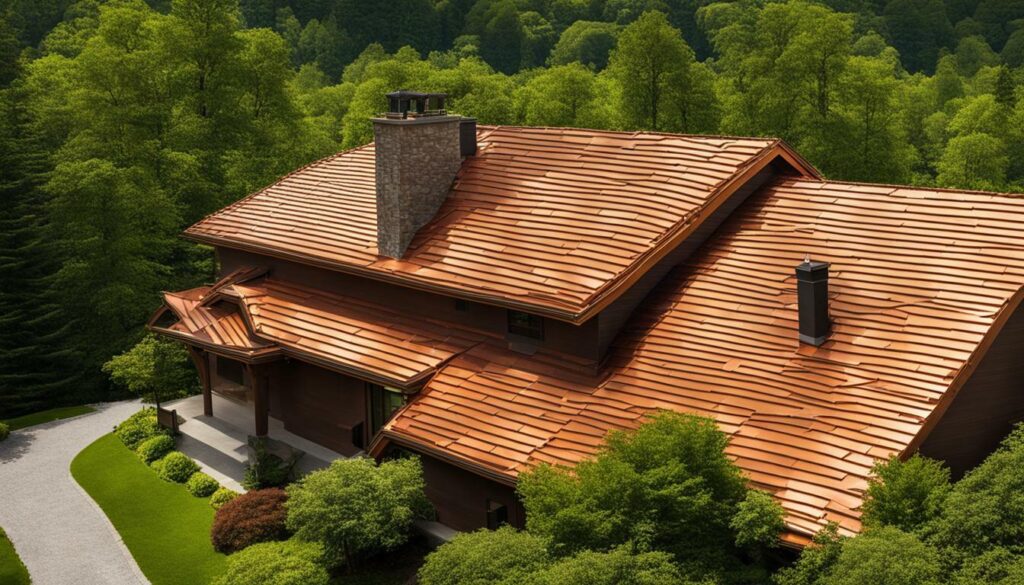
Additionally, zinc and copper strips are environmentally friendly alternatives to chemical treatments. They do not release harmful toxins into the environment and are safe for plants and animals. These strips are easy to install, typically placed near the ridge of the roof where rainfall is concentrated. However, it’s important to consult a professional roofer or follow manufacturer guidelines for proper installation.
By utilizing zinc or copper strips as part of your roof maintenance, you can effectively prevent the growth of algae and mold, ensuring the longevity and appearance of your roof for years to come.
Avoiding Pressure Washing for Asphalt Shingles
It is crucial to avoid pressure washing asphalt shingle roofs, as it can cause granule loss and premature roof failure. Pressure washing delivers a forceful stream of water that can dislodge the protective granules present on asphalt shingles. These granules are essential for the shingles to effectively reflect sunlight and protect the underlying roof structure. Without these granules, the shingles become vulnerable to UV damage, accelerated wear, and decreased lifespan.
To maintain the integrity of your asphalt shingle roof, it is recommended to use alternative cleaning methods that are gentle and safe. One such method is manual cleaning using a soft-bristle brush or a low-pressure hose with a mild cleaning solution. This approach allows you to effectively remove dirt, debris, and organic growth without causing damage to the shingles.
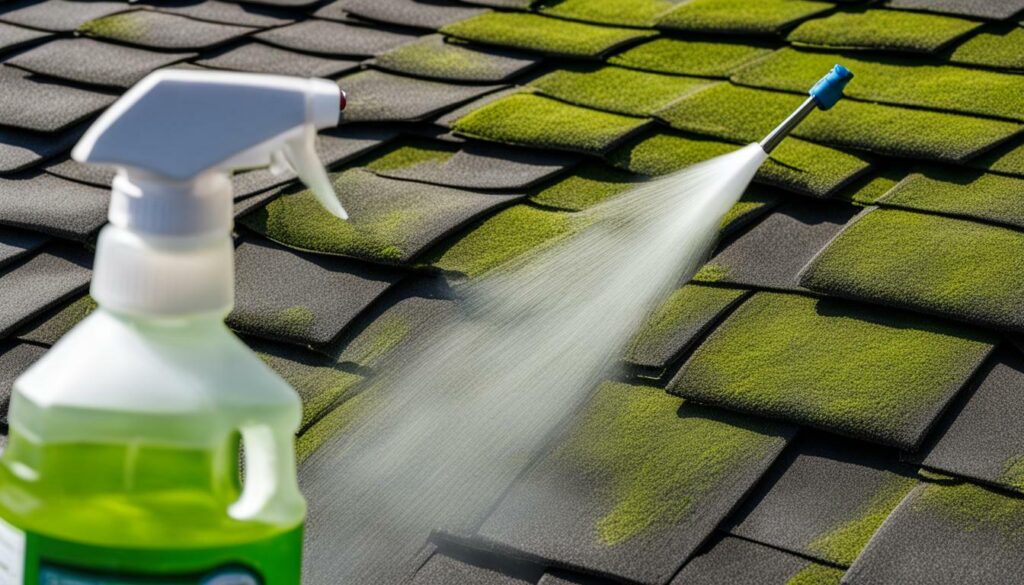
When manually cleaning your roof, always exercise caution and prioritize safety. Use a sturdy ladder and wear appropriate protective equipment, such as non-slip shoes, gloves, and safety goggles. It is also important to work in sections and move gradually across the roof, avoiding sudden or forceful movements.
By following these best practices for roof maintenance and avoiding pressure washing, you can ensure the longevity and resilience of your asphalt shingle roof, protecting your investment and maintaining its aesthetic appeal.
Professional Roof Algae and Moss Removal Services
For a thorough and effective removal of algae and moss from your roof, it is recommended to hire professional services. Trained experts have the knowledge and experience to safely eliminate these growths and restore the pristine condition of your roof.
Professional roof algae and moss removal services utilize specialized equipment and eco-friendly solutions to tackle stubborn stains and growths. They can identify the type of algae or moss affecting your roof and apply targeted treatments for efficient removal. Additionally, professionals can assess the overall condition of your roof and identify any underlying issues that may contribute to the growth of algae and moss.
By hiring professionals, you can save time and effort while ensuring the longevity of your roof. They can complete the cleaning process efficiently, minimizing any potential disruption to your daily routine. Moreover, professional services can provide valuable advice on preventive measures to maintain a clean and healthy roof, extending its lifespan.
“Professional roof algae and moss removal services can offer peace of mind, knowing that your roof is in capable hands. They have the expertise to effectively eliminate algae and moss while safeguarding the integrity of your roof.”
Benefits of Professional Roof Algae and Moss Removal Services:
- Safe and thorough removal of algae and moss
- Use of specialized equipment and eco-friendly solutions
- Identification of underlying roof issues
- Time and effort-saving
- Extended lifespan of your roof
- Expert advice on preventive measures
| Service | Description |
|---|---|
| Algae and moss removal | Professional removal of algae and moss growths on your roof using effective techniques and solutions. |
| Roof inspection | Thorough examination of your roof to identify any damage or potential issues that may contribute to algae and moss growth. |
| Preventive maintenance | Expert advice and recommendations on preventive measures to minimize the recurrence of algae and moss growth on your roof. |
| Cleaning and restoration | Comprehensive cleaning and restoration services to restore the aesthetics and effectiveness of your roof. |
By investing in professional roof algae and moss removal services, you can ensure the long-term health and durability of your roof. Act now to protect your investment and maintain a beautiful and functional roof for years to come.
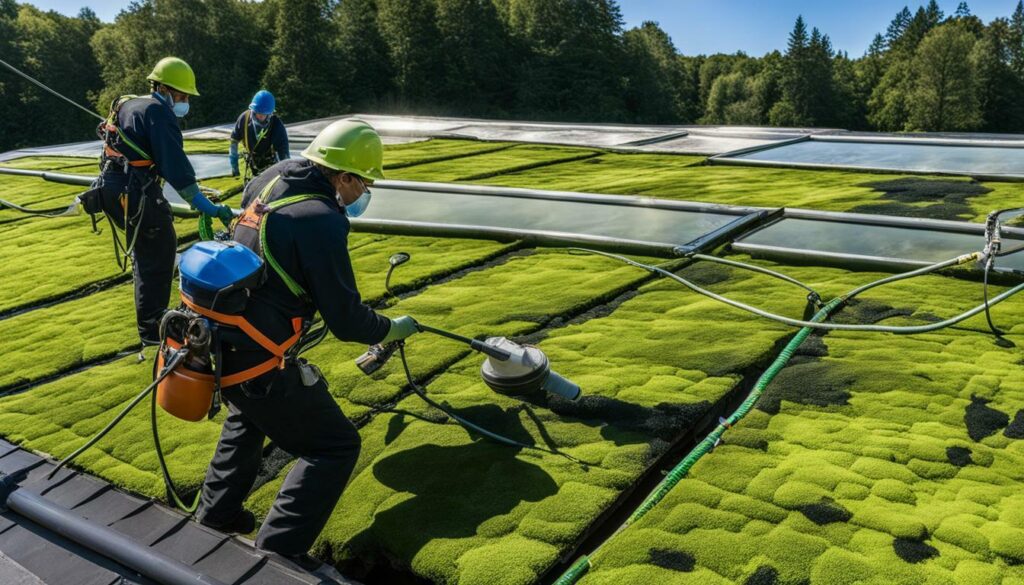
Conclusion
Taking proactive measures to prevent the growth of algae and mold is crucial for the long-term health and durability of your roof. Roof algae, often mistaken for mold or mildew, can create black discoloration and streaks on your roof, affecting its aesthetics and the effectiveness of reflective or “cool” roofs. Meanwhile, moss, a non-vascular plant that thrives in moist environments, can cause shingles to lift or curl, leading to potential water damage and leaks over time.
To effectively prevent and remove algae and moss, a 50:50 mix of liquid chlorine bleach and water can be used, followed by thorough rinsing. However, prevention is always the best approach. Trimming tree branches to increase sunlight exposure, regularly clearing debris from your roof, redirecting airflow away from the shingles, and keeping your gutters clean are all proactive measures you can take to minimize the growth of algae and moss.
An additional preventive measure is to install zinc or copper strips under your shingles. These metal strips work by inhibiting algae growth, helping to maintain the cleanliness and longevity of your roof. However, it’s important to avoid pressure washing asphalt shingle roofs, as this can cause granule loss and premature roof failure.
For the best results and to ensure safety and effectiveness, it is recommended to hire professional roof algae and moss removal services. These experts have the knowledge and experience to handle the task efficiently, helping you maintain a clean and problem-free roof.
In conclusion, by being proactive in preventing the growth of algae and mold on your roof, you can ensure its long-term health, durability, and visual appeal. Implementing preventive measures, such as regular cleaning and maintenance, as well as considering professional services when necessary, will help you maintain a roof that not only looks great but also performs optimally in protecting your home.
FAQ
Q: What is roof algae and how does it impact roofs?
A: Roof algae appears as black discoloration and streaks on roofs. It is not damaging to asphalt shingles but can impact the aesthetics and effectiveness of reflective or “cool” roofs.
Q: What is the difference between algae and mold on roofs?
A: Algae is often mistaken for mold or mildew. While algae is not damaging to asphalt shingles, mold can cause structural issues and health concerns. It is important to distinguish between the two and address mold growth promptly.
Q: What is moss and how does it affect roofs?
A: Moss is a non-vascular plant that thrives in moist environments. It can cause shingles to lift or curl and can lead to water damage and leaks if left untreated.
Q: How can I prevent the growth of algae and moss on my roof?
A: Preventive measures include trimming tree branches to increase sunlight exposure, clearing debris regularly from the roof, directing airflow away from the shingles, keeping gutters clean, and adding zinc or copper strips under the shingles to inhibit algae growth.
Q: What is the recommended cleaning solution for roof algae and moss?
A: A 50:50 mix of liquid chlorine bleach and water can be used to remove algae and moss from roofs. It is important to carefully rinse the roof after applying the solution to avoid any potential damage.
Q: Can I pressure wash my asphalt shingle roof to remove algae and moss?
A: It is not recommended to pressure wash asphalt shingle roofs, as this can cause granule loss and premature roof failure. It is best to use alternative cleaning methods to avoid damage.
Q: Should I hire professional roof algae and moss removal services?
A: Yes, professional roof algae and moss removal services are recommended to ensure safety and effectiveness. These experts have the knowledge and equipment to properly address the growth of algae and moss on roofs.
